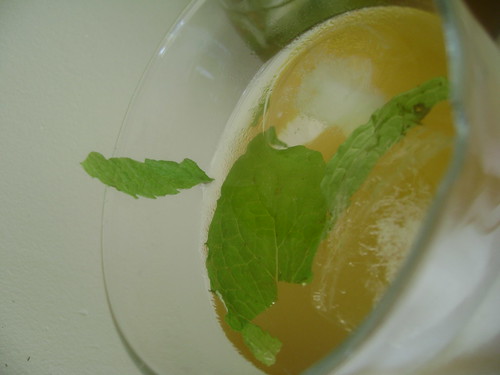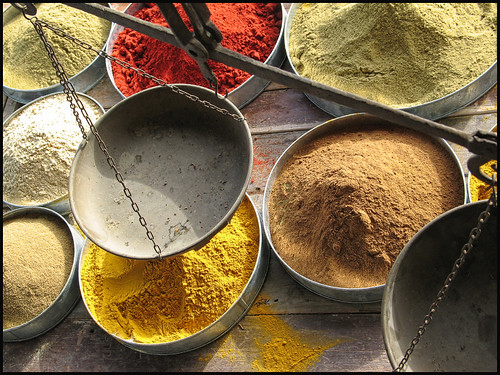Basboosa

Basboosa is a Middle Eastern semolina cake, sweetened with a rosewater honey syrup and often including almonds in the batter or just for decoration. Inspired by the incredible basboosa I had in ancient Jerusalem a couple of springs ago, I have modified a recipe I found online, using goat's milk yoghurt instead of the usual cow's milk yoghurt/buttermilk that the recipes usually call for.
For the Syrup:
3/4 cup sugar
1/4 cup water
4 Tbs. lemon juice
1 Tbs. rosewater
and/or
1 Tbs. orange flower water
- Boil in a small saucepan until all the sugar has melted and the thin syrup can stick to a table spoon.
- Set aside to cool until the batter is baked
For the Batter:
225gr semolina (cream of wheat)
250gr ground blanched almonds
225gr icing sugar
1/2 tsp baking powder
350ml cup goat's milk (or goat's yoghurt)
6 Tbs. ghee or melted butter
Sliced almonds or whole blanched almonds for decoration
- Preheat oven to 350 F (180 C)
- Mix all the dry ingredients
- Add the milk or yoghurt and mix well
- Add the melted butter
- Pour into a pan (either a round spring pan, pie pan or a square/rectangular pyrex pan would do)
- Bake for 15 minutes
- Sprinkle the sliced almonds overtop, or place neatly in lines the whole blanched almonds
- Bake for another 30 minutes or until golden
- Take out of the oven, and immediately sprinkle over the syrup over the hot cake, until the cake is all soaked in syrup.
Serve warm or in room temperature. Makes a great accompaniment for dark Turkish coffee or to Ayala Moriel's Roses et Chocolat perfumed tea.





